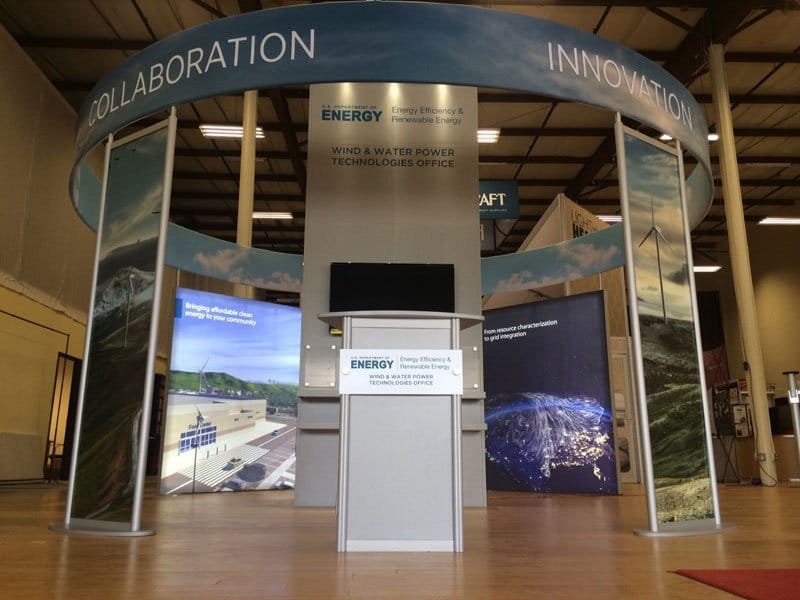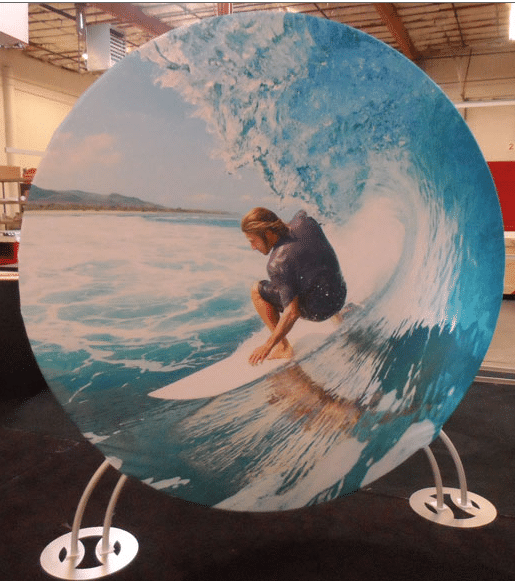Is Jargon Killing Your Trade Show Display ROI?
Many trade show exhibitors make assumptions about booth visitors that can lead to potential problems in being successful at convincing those visitors that their product or service is the answer to the visitor’s problem. Let me explain using the results of a recent survey from one of the big league players in the world of finance: Accenture.
In March of last year, Accenture, a large corporate marketing consulting organization, polled two groups: financial advisors and digitally savvy, high-income investors. What the two groups misunderstood about the other is the surprising part of this story.
Forty-two percent of the advisors described their clients as “very knowledgeable” about investing. On the other hand, only 12% of the investors described themselves that way.
That’s an enormous gap! Keep in mind, that result is from a very technically savvy company, with similarly savvy clients. Obviously, that result may not be limited to the financial field. The same thing could easily be happening with your own customer base, and it may be creating problems that affect your company’s bottom line.
The question you need to ask is, how accurately are you gauging your customers’ awareness of your products and services? It may be possible that you’re giving them too much credit.
If so, chances are your marketing messages won’t resonate with a fairly large percentage of your customer base. If you think your prospects or customers know more than they do, you’re likely to communicate with them in ways that go over their heads.
Or worse, you’ll waste your messaging by telling them what they don’t need to know, skipping over the essentials they still don’t have.
Beware of talking down to your prospects or customers, but don’t overcompensate by assuming they’re as knowledgeable as you are—or even as interested as you are (or as you think they should be).
The problem is, your customers probably aren’t going to tell you that they’re simply not following you.
If you don’t solve this problem, prospects will make their buying decision based on weak premises, built on what limited information they do possess, or they’ll find another supplier that gives them the information they need—in the way they need it—so they can make informed buying decisions.
There are four things you can do in your messaging to avoid the mystification, misunderstandings and mutual frustrations that go along with the gap between what you think your audience knows and what they actually do know:
1) Slow Down:
Practice the habit of providing more background information and context when you’re communicating with trade show attendees (or clients in general!), whether in your exhibit graphics, your product literature, or in the face-to-face communications your booth staffers have with prospects.
One sure way to help is to stop and ask questions of your visitors to make sure they’re following your explanation of your product or service.
If you pause and listen to their replies, you and your booth staffers will learn how to tailor your sales message to your audience.
2) Explain Your Terminology As Simply As Possible:
In the Accenture survey, financial advisors thought their clients understood terms like “equities,” “asset allocation” and “stop-loss orders”— but they really didn’t.
What’s the take-away?
Jargon…Every field has terminology that insiders understand completely, but which your customers (or would-be customers) might be clueless about, or at least unsure about their understanding of that jargon.
(This can be really critical in our own industry; the trade show display industry has a lot of jargon. Many people are unsure of what to call the simple “retractable banner stand” (e.g., pull ups, pop ups, roll ups, etc.), and the differences between a pop up display, a hybrid modular display, and other specialized structures just doesn’t get communicated by the jargon that is typically used – please flag it to us if we can explain ourselves better!)
How do you correct this problem? Make the information clear enough—and jargon-free enough—that a twelve-year-old could understand it. Again, this doesn’t mean you talk down to your prospects; it simply means you communicate with them in the most basic terms possible.
3) Give Customers Permission To Stop You:
When planning for the show, go through your product literature and make sure you’ve communicated clearly. Once the show starts, instruct your staffers to tell visitors, “Please feel free to stop me if I’m not clear.”
Doing so takes the onus off the attendee, who doesn’t have to admit to not understanding. The clearer and simpler you can be, the less likely your prospects will have to ask you to explain yourself.
4) Use All The Tools Available To You:
One surprising finding of the Accenture study is that the gap between financial advisors and their customers could be bridged by offering customers more tools they felt were useful. Remember, these were technically savvy customers who were accustomed to searching for information online and through social media channels.
You can help your customers by doing the same thing: provide them with a variety of opportunities to learn about your company and your products or services. In addition to printed materials, offer your prospects the chance to find out more by visiting your website, following you on Facebook or Twitter, or making use of an application you provide for use on their mobile devices. These digital tools offer you more ways to connect with customers and forge deeper and more rewarding relationships.
For the complete story on the Accenture survey, visit here.
If you need help communicating clearly with your customers through your exhibit, we’re happy to help. We offer a variety of tools for making a great impression on trade show visitors. Representing every major exhibit manufacturer, we’re able to create a great looking trade show booth that helps you tell your story clearly and memorably. Let us show you how. Call us at (425) 556-9511 or email [email protected].
For more, check out the 4 steps to evaluating trade show ROI and how to boost your trade show ROI.

